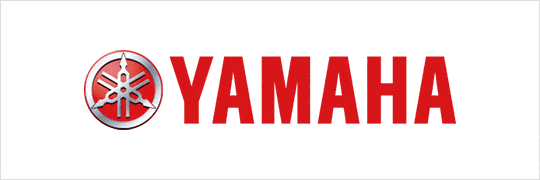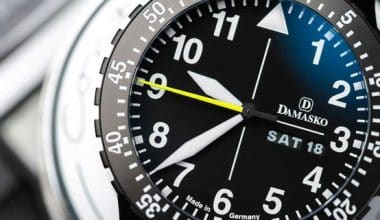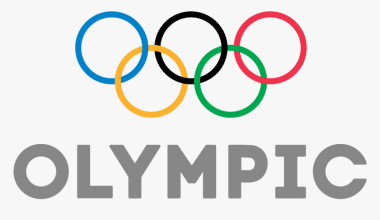Yamaha is a legendary motorcycle company that was formed in Shizuoka, Japan, in May 1955. (Japan). Genichi Kawakami started the Yamaha company, which specialized in the development of two-wheeled vehicles such as motorcycles, scooters, mopeds, and electric bicycles. Yamaha was also involved in the production of water transportation and golf automobiles, as well as musical instruments like pianos. Today, we’ll have a general overview of the Yamaha brand, its logo, and how it has evolved over the years.
Brief Overview Of The Brand
In truth, the company’s history dates back to 1887, when Torakusu Yamaha founded the Nippon Gakki Co. Ltd. to manufacture musical instruments. The effective organization gradually grew and began to develop associated subdivisions unrelated to the main business. One of them is a subsidiary of the same name that manufactures equipment.
When the market for pianos declined and the desire for motorbikes and other modes of mobility soared in the postwar years, the transportation department arose. He gradually separated himself from the parent company and became legally independent. However, he is still financially involved with it because the Yamaha Corporation (formerly Nippon Gakki) maintains a controlling share.
The Yamaha Motor Company logo pays homage to the company’s founder. It depicts three tuning forks used to tune musical instruments. They are linked in a unique shape to make a unique design. The brand has only had two corporate insignia throughout its whole life. The initial version, in black and white, was in use until 1998. The second is a crimson indicator with a metallic sheen that is currently relevant.
The History and Meaning of the Yamaha Logo
Yamaha manufactures musical instruments, motorcycles, household appliances, sporting equipment, and other products. It is a brand that has been around since its inception in 1955. The headquarters of the corporation are in Hamamatsu, Shizuoka, Japan. This progressive and imaginative brand boasts one of the industry’s most distinctive logos. The logo has changed over time and has come a long way since it was initially unveiled. The following is an intriguing history and tale of the Yamaha logo.
Yamaha’s Original Logo
Torakusu Yamaha is the company’s founder. He began his profession as a repairman, working on both medical equipment and musical instruments. He recognized the potential for his company to flourish, but he also faced numerous challenges. Also, he had the foresight to recognize the growth of a multifaceted organization. While working on organ repairs, he formed the trademark brand name Yamaha, which was his surname. Because of the specialized job he did repairing organs, the new company’s first name was Yamaha Organ Works.
By 1955, the company had grown into the Yamaha Corporation, with several new divisions added. Yamaha Motor Company built a motorcycle manufacturing facility. By 1960, the company had expanded into the manufacture of powerboats and outboard motors. Various bikes, scooters, snowmobiles, ATVs, electric drive bicycles, yachts, generators, water pumps, golf buggies, and other lines were added throughout time. Yamaha increased its international presence by opening offices in over 60 countries around the world.
The First Logo: 1955
The first Yamaha logo was adapted from an older design dating back to the phoenix bird of 1898. It was the logo of the Nippon Gakki Co., Ltd, a forerunner of the modern Yamaha Corporation. The initial logo featured a Chinese phoenix holding a tuning fork in its mouth. This original basic sign was used for several decades before the first contemporary Yamaha logo was authorized.
Prior to the formation of the Yamaha Motor Company, the trademarked three tuning forks with the name Yamaha were established in 1927. The three tuning forks represent the three major enterprises of the Yamaha Corporation, which are responsible for technology, production, and sales. These powerful symbols also allude to music and sound products for the entire planet, as shown by the circle enclosing the tuning forks, which also signify musical elements. In 1967, the first official modern graphic logo was adopted. Its design and aesthetics have since developed slightly while retaining the initial components.
Evolution Of The Yamaha Logo
1955 – 1964
The debut Yamaha logo combines a huge “M” with tuning forks. Their contours can be seen in the letter figure and its gaps. There are three stylistic instrument customization accessories in all, one in the middle and two on the right and left. Each of them repeats a written symbol, producing a single structure because this is not a text emblem: it only comprises pictures. Three more tuning forks are crossed and placed at the top, above the word “motorcycle.” For example, a two-wheeled vehicle manufacturer conveyed gratitude to the parent firm that manufactures musical instruments. All elements are surrounded by a narrow ring and are arranged in an even circle.
1964 – present
There was a significant change in the brand identity following the redesign, and there are various reasons for this:
- Text was added to the Yamaha logo by the developers.
- The large “M” has vanished from the visual identification sign.
- The tuning forks were reconfigured into a double ring.
- Curly parts resembling hubs are used to form the rim using tool setting accessories.
- The brand name is written in a clean font.
- Chopped characters stand out against a white background and are simple to read.
1998 to the present
The Yamaha logo that is used now is famous because it was the first to use bright colors. Metallic paint was used on the tuning forks and the wide dividing strip. Red paint was used on the background circle, the edge lines, and the text. This was done to accentuate the icon’s resemblance to the wheel and disk. To make the circle bulge, a gradient and glittering highlights have been applied.
Font and Color of The Yamaha Logo
Both the main corporation and the transportation department have logos that seem extremely similar. This is because the subsidiary formerly produced products under the parent company’s name and only separated from it in 1964. It obtained its trademark in 1976, which differed from the basic one in several aspects.
The core portion of the letter “M” in his word “Yamaha” is symmetrical and has the correct shape, but it is truncated in the corporate design. The tuning forks are the next point of distinction. The points of a motorbike manufacturer extend outside the inner circle and make touch with the outer strip. In contrast, there is just one circle in the musical giant’s insignia, and the tuning forks do not reach the edge at all.
Forks symbolize the union of rhythm, harmony, and melody. The Yamaha logo also represents the foundation of commercial partnerships: technology, production, and trade. In addition, the logo represents a tremendous life force that is safely confined in a vicious circle.
Yamaha Motor Company Ltd. The symmetrical typographic emblem is used, with the central column of the “M” not being reduced. The lettering is done in a modern sans-serif uppercase script. The shipping company’s color palette is black, white, and red, although the parent company’s logo is merely purple.
The Tuning Fork Mark Logo’s Evolution
With the phoenix logo, referred to as the “Ho-oh” symbol, the mark was also formed as a representation of the vital musical aspects of melody, harmony, and rhythm. This sign was chosen after the company had been in operation for a year.
The initial Revision
In 1916, the logo was changed to a trademark that featured the tuning forks without the phoenix or any other design elements. This was a simple symbol, but the same year, an application for approval was submitted with the addition of Yamaha Organ on top of the tuning forks for the company’s organ division. Yamaha’s piano business received a second trademark application.
Yamaha Veneer and Piano Logo
Yamaha Veneer lettering was added to the sides of a triangular enclosure over the three tuning forks in 1927. This was the corporation’s official logo for a long time, until 1934 when it adopted the logo for its piano division, which featured an image of a black piano within a white circle enclosed in a black circle. The name Yamaha was centered in white on the piano image, with three tuning forks above it. The logo comprised an oval shape with a black background, the piano sign in white with a round enclosure, the word Yamaha, and the tuning forks in the same location but in white against black for advertising purposes. Until 1959, white symbols were placed on the right and left sides of the smaller piano image.
Logos for Musical Instruments
The tuning fork was smaller and placed above a black circle with a white background and the image of three knobbed batons in the logo used to advertise Yamaha’s line of musical instruments over the years. At the conclusion of the decade, a more modern logo with only the three tuning forks was introduced, and it was available in either white on black or black on white without the Yamaha name. When Yamaha logos were standardized with white letters and a reverse design in 1967, the same essential features were preserved in the logo design.
Currently
In 2016, the fork marks became more consistent.
The Yamaha Corporation established the 1967 logo as the Standard logo in 1998 but permitted customized variants of the logo. With the reverse design and the standard version, the name Yamaha was added with the tuning forks picture to the left-hand side of the logo. A few alterations were made in the regularly accepted version throughout this time period. The color scheme employed in the logo from this moment forward differed from the corporate color of violent to the Yamaha Motor Co. Red logo for Ltd.
Can I Use Yamaha Logo?
Yamaha Authorized Dealers and anyone with permission are permitted to use Yamaha trademarks and logos in strict conformity with Yamaha Guidelines. The use of Yamaha trademarks and logos outside of these Guidelines is a violation of Yamaha rights and is strictly prohibited.
The Yamaha Brand
When Yamaha Motor Co., Ltd. was founded in Japan in July 1955, it was a latecomer in a market where up to 150 motorbike manufacturers contended for survival. New ones were sprouting out at an alarming rate, while others were collapsing, and just a few withstood the test. You will recognize the spirit of struggle in these early years of Yamaha Motor’s past, which forged the firm into the global corporate group we are today, in pursuit of the eternal aim of being the best in the world market.
History Of Yamaha Brand and Motorcycles
Every Yamaha product has a logo that is a stylized trio of interlocking tuning forks, whether it is a two-wheel, outboard, generator, wave runner, snowmobile, quad, or side-by-side. The Yamaha Motor Co. emblem, which today is one of the major producers of motorcycles, outboard motors, and other products, recalls the company’s origins as a manufacturer of musical instruments, specifically pianos and reed organs. Furthermore, aside from automobiles, Yamaha is a globally significant and influential manufacturer of musical instruments.
Torakusu Yamaha founded Yamaha as Nippon Gakki Company, Limited in Hamamatsu in 1887 as a manufacturer of pianos and reed organs. The origins of the company are still reflected in the group’s logo, which is a trio of interlocking tuning forks. Torakusu Yamaha died in 1916, at the age of 64, during World War I, but the brand went on to become a globally recognized benchmark.
Pre and Post-World War Events
When World War II broke out, Nippon Gakki facilities began producing propellers for Zero fighter planes, as well as fuel tanks and wing pieces. These commodities paved the way for greater variety in the postwar years. Meanwhile, Nippon Gakki was forced to discontinue the production of musical instruments in 1945.
Only one Nippon Gakki factory survived the US bombing raids during WWII. The production of harmonicas and xylophones was made possible by postwar financial assistance from the United States only two months after the funds were received. It produced organs, accordions, tube horns, and guitars in six months. Nippon Gakki resumed exporting harmonicas after the Allied powers authorized civilian trade in 1947.
Following World War II, firm president Tomiko Genichi Kawakami repurposed the company’s wartime production machinery and expertise in metallurgical technology to the production of motorbikes. The YA-1 (AKA Akatombo, the “Red Dragonfly”) was named in honor of the inventor, and 125 were manufactured in the first year of production (1958). It was a 125cc, single-cylinder, two-stroke street bike modeled after the German DKW RT125 (which the British armaments business, BSA, had also copied in the post-war era and marketed as the Bantam and Harley-Davidson as the Hummer).
Yamaha’s Initial Motorcycle
Genichi Kawakami, then president of Nippon Gakki (now Yamaha Corporation), used machining equipment used in the production of metal airplane propellers to design the first Yamaha motorcycle. With a beginning capital of 30 million yen, 274 employees, and two single-story wooden factory buildings with a capacity to turn out 200 motorcycles per month, the nascent firm dared to fight competition, a will that came to develop the company spirit of challenge. Yamaha won the Mt. Fuji Ascent Race with the inaugural YA-1. From then on, the team pushed through one hurdle after another, working as a team and sharing wins and losses.
Diversification
Yamaha’s in-depth understanding of 2-stroke technology led to the company’s expansion into the outboard engine business in 1960. The 650cc XS-1, Yamaha’s first 4-stroke motorcycle, was introduced in 1970, and the company diversified into the manufacture of a variety of new products during this decade, including All Terrain Vehicles, golf cars, generators, and industrial robots. This was followed in the 1980s by the development of high-performance car engines and water vehicles.
The One R1
Motorcyclists will remember 1998 for many years to come because it was the year Yamaha introduced the YZF-R1, largely regarded as the most remarkable supersport model of the decade. The R1’s race-bred engine and chassis technology underscore Yamaha’s commitment to providing goods that generate “Kando” the first time and every time.
History of Yamaha Pianos
Yamaha Corporation is a global corporation. It was founded in 1887 and owned very distinct products and industries in various niches. Yamaha Motor Company Ltd was one of its units that broke away in 1955. Yamaha Corporation is the world’s largest maker of digital and acoustic pianos.
For 131 years, Yamaha Corporation has provided a variety of products and services to its customers. This corporation’s products include musical instruments, audio equipment, and its subsidiary company Yamaha Motors.
Yamaha manufactures three varieties of acoustic pianos: luxury concert-grade pianos, professional less-priced grand and upright pianos, and entry-level grand and upright pianos. They were also among the first to introduce hybrid models, such as the Yamaha Avant Grand, which, according to their motto, is a piano with “Everything You Want From An Acoustic.” “Everything You Need to Know About Digital”.
Timeline of Yamaha Corporation
The best thing about this company is its 131-year history. Throughout this time, they have been developing their business and product line in order to provide the best possible service to their consumers. Here’s a quick look at Yamaha Corporation’s history.
1887 to 1917
Torakusu Yamaha, the founder of Yamaha Corporation, constructs his first reed organ. It results in the formation of Nippon Gakki Co., Ltd. (The old name for Yamaha Corporation). And, in 1900, the business began manufacturing upright pianos.
1917 to 1947
The company excelled in the construction of upright pianos and was able to increase its client base.
1947 to 1977
- Its shares were listed on the Tokyo Stock Exchange.
- The Yamaha Music Foundation was established, and pilot classes were held there.
- The establishment and dissolution of the motorcycle corporation (Yamaha Motors).
- Creating the overseas subsidiary (first in Mexico).
- Beginning production of electronic organs.
- Yamaha International Corporation is being upgraded.
- Starting a recreation company.
- Producing lifestyle items, wind instruments, and semiconductors.
1977 to 2007
- During this time period, the corporation celebrated its 100th anniversary and changed its name to Yamaha Corporation.
- Yamaha Music and Electronics Co. were founded (in China).
- Steinberg Media Technologies has been acquired.
- Creating the corporation that will hold the music entertainment business.
2007 to the present
During this time, the company worked on its entire setup, including building expansion. It also finished the integration of Japanese wind instrument factories (to Japan). The Yamaha Music Japan Co. Corporation was also created.
Facts About Yamaha
Yamaha began as a tiny company but has grown to become one of the world’s major companies. It is currently one of the world’s major motorcycle firms, with a presence in several countries, including India. Every day, many Yamaha motorcycles are sold in the country, which is why Yamaha insurance policies are in high demand. Here are some facts you should know about Yamaha:
#1. The founder of the Yamaha Corporation
Torakusu Yamaha, a Japanese businessman, started the corporation. Interestingly, his initial attempt was to repair a damaged reed organ in 1887, rather than developing motor vehicles. Torakusu Yamaha formed the Yamaha Corporation after years of tinkering with organs.
#2. Yamaha Motor Company’s owner
Yamaha Motor Firm is a publicly traded company. This signifies that some stockholders own a portion of the corporation. However, certain important members of the board are the organization’s major decision-makers. Yoshihiro Hidaka is one of the most important names in this field. He is the CEO of Yamaha Co., Ltd. Mr. Hidaka also serves as the company’s Chief Executive Officer and Representative Director. The Chairman and Representative Director is Mr. Hiroyuki Yanagi.
#3. The Meaning of the Yamaha Logo
The Yamaha logo has changed multiple times over the years. A tuning fork, however, has remained a common part. The tuning fork represents the company’s beginnings, which are primarily in the repair of musical instruments. Though Yamaha eventually ventured into automobiles, its musical roots remain. The current three-fork logo represents technology, manufacturing, and sales.
#4. What Yamaha is well-known for
Yamaha is well-known for its motorcycles. It is one of the world’s leading manufacturers of two-wheelers. It has a large consumer base in India, where Yamaha two-wheelers are immensely popular. As a result, several Yamaha insurance policies are available around the country. Aside from that, the company is well-known for its pianos and keyboards.
#5. Is Yamaha a Japanese manufacturer?
Yes, Yamaha is a Japanese firm that was founded in Japan. Torakusu Yamaha, the company’s founder, was also Japanese. The corporation follows numerous Japanese values and is hence a true Japanese organization.
#6. Is Yamaha an Indian firm?
Motor India Pvt. Ltd. Ltd, which was founded in 1985, is Yamaha’s Indian subsidiary. The company’s headquarters are in India, where regional production takes place. However, Yamaha’s main corporation is still situated in Japan.
#7. Is Toyota the owner of Yamaha?
No, Toyota does not own Yamaha. Toyota, on the other hand, is the company’s second-largest shareholder, owning around 3.8% of the stock. Yamaha Corporation is the main stakeholder of Yamaha Motor Company and thus the company’s lawful owner.
#8. Yamaha’s very first product
Yamaha began its business in the late nineteenth century by producing a reed organ. Only a few years later, in 1900, the firm began manufacturing pianos. For more than a half-century, its main market was musical instruments. Yamaha did not produce its first motorcycle until 1955. It was a YA-1, a 125 CC two-cycle single-cylinder motorcycle.
#9. Why Yamaha manufactures both pianos and motorcycles
Yamaha began in the 1880s as a maker of reed organs. In the early 1900s, it expanded into the production of pianos. As a piano manufacturer, the company established a large clientele, and the legacy lives on to this day. The vehicle wing was established in 1955 as a subsidiary and, later, as a separate business. As a result, the Yamaha brand now includes both pianos and motorcycles.
#10. The name of the first Yamaha motorcycle
Yamaha’s first two-wheeler was a street bike, the YA-1, a single-cylinder motorbike with a 125 CC two-cycle engine. It was designed and manufactured in 1955. The design was inspired by the German DKW RT 125. Today, various models are available, and each bike is covered by an appropriate Yamaha insurance package.
#11. Where Yamaha motorcycles are manufactured
Yamaha manufactures the vast majority of its motorcycles in Japan. In Iwata, they have a big manufacturing plant. Other countries, notably India, have domestic manufacturing operations.
#12. Are Yamaha motorcycles still manufactured in the United States?
In the United States, there is a large production facility in the state of Georgia. The company was founded in 1986 and is known as Yamaha Motor Manufacturing Corporation of America. The company primarily manufactures golf carts, boats, and recreational off-road vehicles. The automobiles produced here are sold all over the world.
#13. Yamaha products
Yamaha is most renowned for producing two-wheelers, as we all know. While Yamaha’s best-selling product is undoubtedly its motorcycles, the company is also a global leader in the production of pianos. Yamaha is a well-known maker of pianos and keyboards.
Aside from these two primary goods, Yamaha has expanded significantly and now manufactures computer parts, home appliances, and other sorts of vehicles like as golf carts, among other things. The corporation is a true conglomerate with a wide range of products.
#14. Is Yamaha a car manufacturer?
Engine components are one of Yamaha’s most important products. The company makes numerous engine parts for automobiles, particularly Toyota models. As a result, while Yamaha does not directly produce cars, it does play a part in the components of many cars.
#15. Which vehicles are powered by Yamaha engines?
Toyota and Ford are two of Yamaha’s biggest customers for engine parts, hence Yamaha engines can be found in a variety of Ford and Toyota vehicles.
#16. Yamaha motorcycles sales
In 2020, Yamaha sold 1.5 trillion yen in motorcycles. However, sales were nearly 11% lower than in 2019. The pandemic had taken its toll on the company, but there are clear indications of recovery, which is excellent news for all Yamaha fans.
Are Kawasaki and Yamaha The Same?
They are not the same. Both Yamaha and Kawasaki are excellent motorbike manufacturers, and you can’t go wrong with either. However, Kawasaki is recognized for having a performance-oriented approach with its bikes, whereas Yamaha prioritizes value for money, especially in the entry-level category.
What Is Yamaha’s Slogan?
Yamaha’s new slogan is “Revs your heart”.
How does the Yamaha logo reflect Yamaha’s values and brand image?
The Yamaha logo is a symbol of the company’s values, which include quality, innovation, and tradition. The use of three tuning forks in the logo represents Yamaha’s focus on producing high-quality audio products, while the modern design of the logo reflects the company’s commitment to innovation. The logo reflects Yamaha’s brand image as a reliable, forward-thinking company that values traditional techniques and crafts.
What do customers associate with the Yamaha logo?
Customers associate the Yamaha logo with high-quality audio products, from musical instruments to home entertainment systems. The logo is often seen as a symbol of reliability, innovation, and commitment to craftsmanship. Many customers also associate the Yamaha logo with the company’s long history and experience in the audio industry.
How does the Yamaha logo differentiate Yamaha from its competitors?
The Yamaha logo sets the company apart from its competitors by reflecting its commitment to quality, innovation, and tradition. The use of three tuning forks in the logo is a unique symbol that is immediately recognizable and sets Yamaha apart from other audio brands. The modern design of the logo reflects the company’s focus on innovation, which helps it stand out in a crowded marketplace.
What are some common misperceptions about the Yamaha logo?
One common misperception about the Yamaha logo is that the three tuning forks represent the three primary colors (red, blue, and green). Another misperception is that the logo is intended to look like the letter “Y”. Some people may also think that the tuning forks symbolize the company’s focus on just one product category, when in fact Yamaha produces a wide range of audio products.
What role does the Yamaha logo play in the company’s overall branding strategy?
The Yamaha logo plays a crucial role in the company’s overall branding strategy by serving as a visual representation of Yamaha’s values, history, and commitment to quality. By consistently using the logo across all of its products and marketing materials, Yamaha helps to reinforce its brand image and build customer recognition and loyalty. The logo is an important part of the company’s overall branding strategy and helps to communicate the Yamaha brand promise to customers.
In Conclusion
Yamaha began under a previous name in 1898 and has since grown into the current enterprise that develops and sells a wide range of musical, electronic, and automotive goods. The new Yamaha emblem keeps one element of the original sign in the placement of the three tuning forks. Throughout the decades, many different representations and forms of the emblem have existed, but the logo was finally standardized with only a few special logo designs allowed. The symbol is simple to recognize, and knowing the history behind the tuning forks adds fresh meaning to the symbol, making it even more memorable.
Related Articles
- THE BEST FUEL MANAGEMENT SYSTEMS FOR YOUR FLEET
- PIANO BRANDS: 7 Brands to Avoid & Top Ranking Brands in 2023 (Updated)
- Best Motorcycle Insurance Companies of 2023: Coverages & Quotes
- ELECTRIC GUITAR BRANDS: 17+ Top Best List of Electric Guitar Brands
- BEST MOTORCYCLE BRANDS: Top 21 Brands in the World for Beginners & Pros
- HERMES LOGO: Meaning, Evolution, and History






